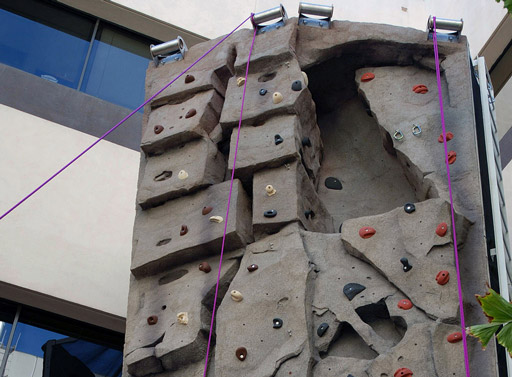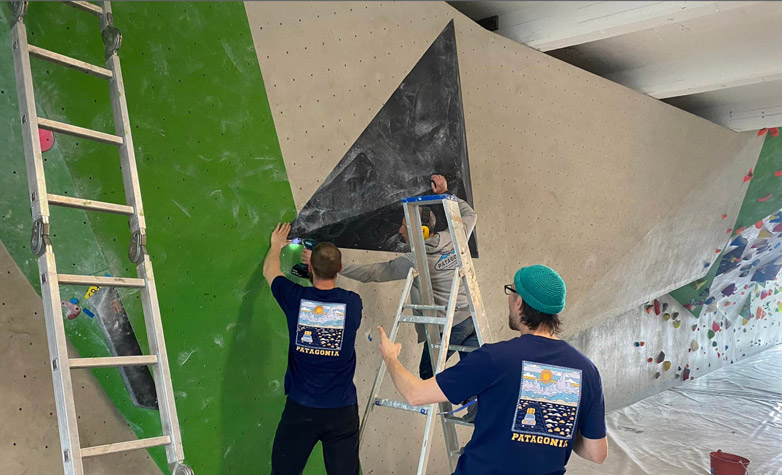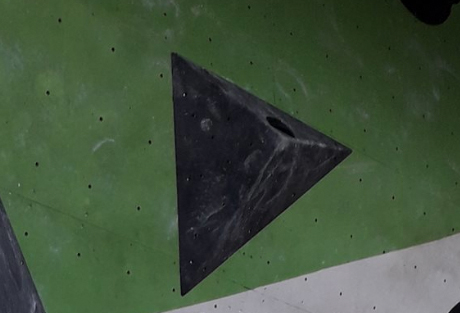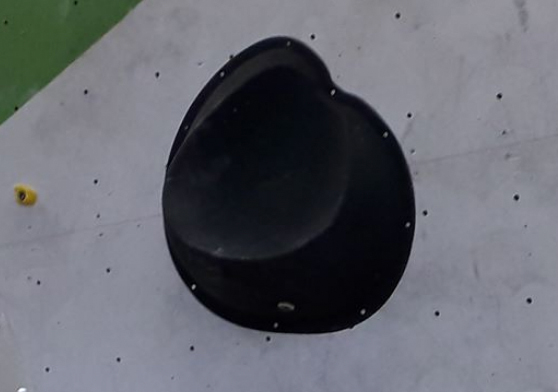Historically, indoor climbing walls used to have static features such as indents, bulges, and cracks to closely resemble real outdoor rock. This gave route setters to get creative with as they could only drill handholds and footholds in the walls to set their routes.

This was changed with the invention of volumes. Volumes of all shapes and sizes allow route setters to get as creative as possible. Volumes really changed indoor climbing and primarily bouldering for the better.

What is a volume at the bouldering gym?

A volume is a big structure that route setters use to change the angle and dynamic of a bouldering wall and allows them to create interesting boulder problems. Hand and footholds can be attached to the volumes to make the boulder problems even more immersive.
Basically, volumes are the MVPs of any bouldering wall. They allow route setters to go nuts and create the weirdest, funkiest, and fun bouldering problems. While volumes are mostly made out of wood, they sometimes can be made from other materials such as fiberglass as well.
Characteristics of a bouldering volume:
- They have a geometric shape
- They are bigger than holds
- They have t-nut holes in them to allow the placement of holds
- They change the surface of the wall
- Mostly made out of wood
Bouldering volumes across the world
Just like boulder grading, the term ‘volume’ in climbing is used differently around the world. The biggest difference lies in the way Americans see volumes compared to Europeans.
European definition of a boulder volume: A giant hold, regardless of whether you can attach other holds to them.
American definition of a boulder volume: A giant structure with t-nut holes that you can attach hand and footholds to.
So if you ever travel beyond your own region, you might notice that climbers on the other side of the pond have a slightly different definition of a bouldering volume.
Every climber agrees however, that this is a volume:

Where US and EU climbers argue is whether or not this is a volume:

Many EU climbers consider this fiberglass hold a volume whereas US climbers don’t consider it a volume because no holds can be attached to it.
How to use volumes, are they included?
Oftentimes, climbers wonder whether or not volumes are included in their boulder problems. After all, you want to know if you can really send the problem, instead of cheating it.
Whether or not a volume is included, depends entirely on the bouldering gym. Some gyms have rules such as ‘volumes are included if they have a hold of the same color’ while other gyms have no rules at all regarding volumes and they are all fair game.
In most cases, volumes are always on unless stated otherwise. This means you can grab them, push or pull off of them and smear on them. Volumes are your friend! Use them like an extension of the wall.
It’s unlikely that a volume isn’t included in your boulder problem but if you are still uncertain, you can always ask the gym staff.
Read also: Bouldering Rules
Can’t get enough of bouldering volumes?
Here’s a clip of Rockentry sending a volume-only boulder problem.
Conclusion
So there you have it. Volumes are the big wooden structures that change the dynamic of your bouldering wall. Volumes make it so that route setters can get really creative and create tens of thousands of different problems on the same portion of a bouldering wall. In most cases, you can use volumes to send your problem.
📚 Eager for more? Read our Bouldering Beginners Guide.
Continue reading
More articles like this
- Indoor Bouldering Basics: intro to gym climbing
- Tips for short climbers
- Complete Guide to Bouldering Grades (& conversions)
- How to start and finish a boulder problem
- Can I get abs from climbing?
- Bouldering vs rock climbing
- How often you should go bouldering per week
- Why bouldering is a good full-body workout
- Climbing 101: what is cutting feet?
- How long does it take to progress in bouldering?
- How much does it cost to start bouldering?
- What to wear indoor bouldering
- How much of a bouldering wall can you use?
- Should climbing shoes hurt?
- How many climbing shoes do you really need?
- Yoga for climbers
- Core workout for climbers

